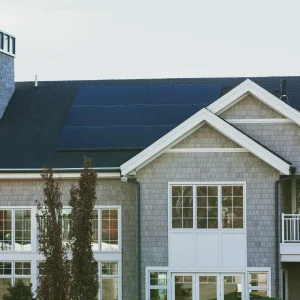Sustainable living is key to improving communities while safeguarding the environment. By adopting eco-friendly habits, communities benefit from reduced pollution, improved health, and cost savings. Here’s how sustainable living makes a lasting impact on neighborhoods and cities alike.
Healthier Communities
Sustainable living directly contributes to healthier environments. By reducing waste and pollution, communities experience cleaner air, water, and overall surroundings, which lowers the risk of diseases and respiratory conditions, especially for vulnerable groups like children and the elderly.
Cleaner Air
Switching to renewable energy and adopting eco-friendly transportation options, such as cycling or electric vehicles, drastically reduces air pollution. This, in turn, decreases health risks linked to pollutants from fossil fuels, resulting in healthier, more vibrant communities.
Reduced Waste
Recycling programs and composting significantly reduce landfill waste. Cleaner streets and public spaces mean fewer disease-carrying pests and healthier ecosystems. Communities that embrace waste reduction foster healthier environments, benefiting residents and wildlife alike.
Economic Benefits of Sustainable Living
Sustainable living isn’t just good for the environment—it’s also financially rewarding. By conserving resources and investing in green technologies, communities save money while stimulating local economies.
Lower Utility Bills
Energy-efficient homes equipped with solar panels and proper insulation significantly reduce electricity consumption, cutting household utility costs. Simple measures like switching to LED lighting and installing energy-efficient appliances can reduce monthly energy expenses by 15-30%.
Local Economic Growth
Investing in renewable energy, recycling, and local food production creates jobs and boosts local economies. These industries support sustainable practices and keep money within the community, fostering economic resilience.
Sustainable Infrastructure
Sustainable living promotes the use of eco-friendly materials and energy-efficient designs in housing and infrastructure. Green building techniques not only minimize environmental impact but also enhance the durability and longevity of homes and public structures.
Green Construction Materials
Materials like bamboo and recycled plastic are excellent alternatives to conventional building supplies. Bamboo, for example, grows rapidly and offers superior strength, making it a sustainable and durable choice for construction. These materials ensure that homes and structures last longer, reducing the need for frequent repairs and replacements.
Energy-Efficient Homes
Homes designed with energy efficiency in mind use less power for heating, cooling, and lighting. These homes incorporate features like high-quality insulation, energy-efficient windows, and passive solar heating, making them cheaper to maintain and healthier to live in.
Strengthening Community Ties Through Sustainability
Sustainable living fosters collaboration and community spirit. Eco-friendly initiatives like community gardens, recycling drives, and renewable energy projects bring people together, creating a sense of shared responsibility.
Community Engagement
Eco-friendly projects encourage participation and cooperation among residents. Community gardens, for example, bring neighbors together to grow food, share resources, and build relationships. This strengthens social ties and fosters a greater sense of belonging within the community.
Education and Awareness
Educational programs focused on sustainability raise awareness and empower individuals to make eco-conscious choices. By spreading knowledge about the benefits of sustainable living, communities can inspire long-term environmental stewardship.
Conclusion
Sustainable living offers numerous benefits for communities, from improved health and economic savings to stronger social bonds. By adopting green practices, communities not only reduce their environmental impact but also ensure a better quality of life for all residents. Sustainable living is the key to building healthier, more resilient, and self-sufficient communities.




